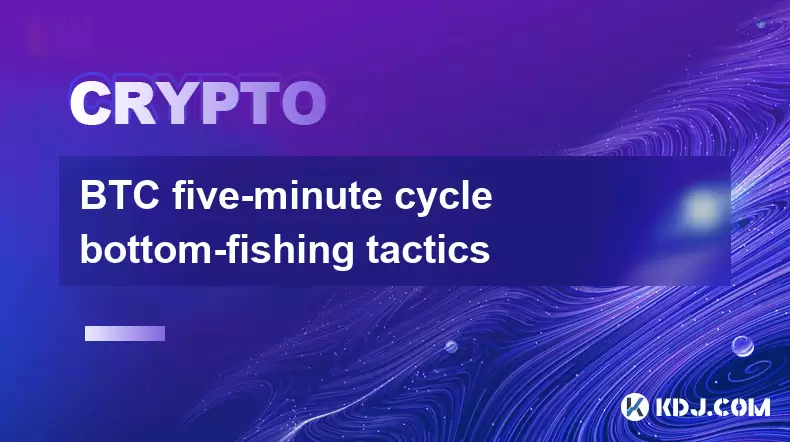-
 Bitcoin
Bitcoin $116900
0.00% -
 Ethereum
Ethereum $4280
5.48% -
 XRP
XRP $3.265
-1.45% -
 Tether USDt
Tether USDt $1.000
-0.01% -
 BNB
BNB $807.0
1.41% -
 Solana
Solana $183.1
2.93% -
 USDC
USDC $0.9999
0.00% -
 Dogecoin
Dogecoin $0.2440
6.50% -
 TRON
TRON $0.3357
-0.88% -
 Cardano
Cardano $0.8178
2.63% -
 Hyperliquid
Hyperliquid $44.13
7.45% -
 Chainlink
Chainlink $21.39
9.09% -
 Stellar
Stellar $0.4524
-0.84% -
 Sui
Sui $3.957
2.13% -
 Bitcoin Cash
Bitcoin Cash $572.7
-2.54% -
 Hedera
Hedera $0.2671
1.54% -
 Avalanche
Avalanche $24.77
4.17% -
 Ethena USDe
Ethena USDe $1.001
0.02% -
 Litecoin
Litecoin $122.3
-1.94% -
 Toncoin
Toncoin $3.432
2.26% -
 UNUS SED LEO
UNUS SED LEO $9.007
0.49% -
 Shiba Inu
Shiba Inu $0.00001396
5.26% -
 Uniswap
Uniswap $11.09
1.64% -
 Polkadot
Polkadot $4.155
4.57% -
 Dai
Dai $1.000
0.00% -
 Pepe
Pepe $0.00001253
5.11% -
 Cronos
Cronos $0.1588
2.67% -
 Bitget Token
Bitget Token $4.512
0.05% -
 Monero
Monero $275.0
0.64% -
 Ethena
Ethena $0.7527
15.10%
BTC five-minute cycle bottom-fishing tactics
BTC five-minute cycle bottom-fishing uses technical indicators like RSI and MACD to buy low and sell high within short intervals for quick trades.
Jun 03, 2025 at 02:14 pm

Introduction to BTC Five-Minute Cycle Bottom-Fishing
BTC five-minute cycle bottom-fishing refers to a trading strategy where traders attempt to buy Bitcoin at the lowest points within a five-minute interval. This technique is based on the principle of buying low and selling high, with the aim of capitalizing on short-term price fluctuations. The five-minute cycle is chosen due to its balance between providing enough data for analysis and being short enough to allow for quick trades.
Understanding the Five-Minute Cycle
The five-minute cycle in cryptocurrency trading involves analyzing price movements within a five-minute timeframe. Traders use various technical indicators and chart patterns to identify potential lows, or "bottoms," within these cycles. Key indicators such as moving averages, RSI (Relative Strength Index), and MACD (Moving Average Convergence Divergence) are commonly employed to help predict these lows.
Tools and Indicators for Bottom-Fishing
To effectively engage in BTC five-minute cycle bottom-fishing, traders need to familiarize themselves with several tools and indicators. Moving averages can help identify trends and potential reversal points. A commonly used combination is the 50-period and 200-period moving averages. The RSI is useful for identifying overbought or oversold conditions, with readings below 30 often indicating an oversold market, which could signal a buying opportunity. MACD helps in confirming trend changes and potential entry points.
Setting Up Your Trading Platform
To start bottom-fishing within the BTC five-minute cycle, you'll need to set up your trading platform correctly. Here's how to do it:
- Choose a reliable trading platform that supports real-time data and charting tools. Popular choices include Binance, Coinbase Pro, and Kraken.
- Configure your chart settings to display five-minute candlesticks. This can usually be done by selecting the "5m" interval from the time frame options on your trading platform.
- Add the necessary indicators to your chart. Most platforms allow you to add moving averages, RSI, and MACD from a menu of technical indicators.
- Set up alerts for when certain conditions are met, such as when the RSI falls below 30 or when the MACD line crosses above the signal line.
Identifying Bottoms in the Five-Minute Cycle
Identifying the bottom within a five-minute cycle involves closely monitoring the price action and the indicators you've set up. Here's how to do it:
- Watch for price rejection at key support levels. If the price touches a support level and bounces back up, it could indicate a potential bottom.
- Look for bullish candlestick patterns such as hammers or dojis, which can signal a reversal from a downtrend.
- Monitor the RSI for readings below 30, which suggest the market may be oversold and due for a rebound.
- Check the MACD for a bullish crossover, where the MACD line crosses above the signal line, indicating potential upward momentum.
Executing the Trade
Once you've identified a potential bottom within the five-minute cycle, it's time to execute your trade. Here's how to do it:
- Place a buy order at the identified bottom price. You can use a market order for immediate execution or a limit order if you want to buy at a specific price.
- Set a stop-loss order to limit potential losses. A common practice is to set the stop-loss just below the identified bottom to protect against further declines.
- Determine your take-profit level. This could be based on resistance levels or a percentage gain you're aiming for.
- Monitor the trade closely, as the five-minute cycle moves quickly. Be prepared to adjust your stop-loss or take-profit levels as the market evolves.
Risk Management in Bottom-Fishing
Bottom-fishing within the BTC five-minute cycle can be risky due to the short timeframe and the potential for rapid price movements. Here are some risk management strategies to consider:
- Use small position sizes to limit the impact of any single trade on your overall portfolio.
- Diversify your trades across different timeframes and assets to spread risk.
- Avoid overtrading, as the frequency of trades can lead to increased transaction costs and potential losses.
- Regularly review and adjust your strategy based on performance and market conditions.
Frequently Asked Questions
Q: How often should I monitor the five-minute cycle for bottom-fishing opportunities?
A: Monitoring the five-minute cycle for bottom-fishing opportunities should be done continuously during trading hours. Given the rapid nature of these cycles, staying vigilant is crucial. However, setting up alerts for key indicators can help manage your time more effectively.
Q: Can bottom-fishing be applied to other cryptocurrencies besides BTC?
A: Yes, bottom-fishing can be applied to other cryptocurrencies. However, the effectiveness of this strategy may vary depending on the liquidity and volatility of the specific cryptocurrency. Always conduct thorough research and adjust your indicators and risk management strategies accordingly.
Q: What are the common pitfalls to avoid when bottom-fishing in the BTC five-minute cycle?
A: Common pitfalls include chasing losses by increasing position sizes, failing to set stop-loss orders, and misinterpreting short-term price movements as long-term trends. It's essential to maintain discipline and adhere to your trading plan.
Q: How can I improve my success rate with BTC five-minute cycle bottom-fishing?
A: Improving your success rate involves continuous learning and adaptation. Keep a trading journal to record your trades and outcomes, regularly review your performance, and stay updated with market news and trends. Additionally, consider using backtesting tools to refine your strategy based on historical data.
Disclaimer:info@kdj.com
The information provided is not trading advice. kdj.com does not assume any responsibility for any investments made based on the information provided in this article. Cryptocurrencies are highly volatile and it is highly recommended that you invest with caution after thorough research!
If you believe that the content used on this website infringes your copyright, please contact us immediately (info@kdj.com) and we will delete it promptly.
- Trump, Nasdaq, and Token Treasury: WLFI's $1.5B Gambit
- 2025-08-10 06:50:12
- Trump, Nasdaq, and Token Treasury: WLFI's $1.5B Play
- 2025-08-10 06:30:11
- Bitcoin's Blazing 2025: YTD Performance and Total Return Breakdown
- 2025-08-10 07:10:12
- Coinbase, DEX Trading, and Base Network: A New Era for Crypto?
- 2025-08-10 06:30:11
- Dogecoin's Bullish Breakout: Riding the Fibonacci Waves to $1?
- 2025-08-10 07:10:12
- Block Inc., Bitcoin, and Mining Chips: Reshaping Digital Finance, New York Style
- 2025-08-10 06:50:12
Related knowledge

What are the key features of Bitcoin?
Aug 10,2025 at 02:50am
Decentralization and Peer-to-Peer NetworkOne of the most defining characteristics of Bitcoin is its decentralized nature. Unlike traditional financial...

Can the Bitcoin protocol be changed?
Aug 07,2025 at 01:16pm
Understanding the Bitcoin ProtocolThe Bitcoin protocol is the foundational set of rules that govern how the Bitcoin network operates. It defines every...

What happens to Bitcoin transactions once they are confirmed?
Aug 09,2025 at 05:22am
Understanding Bitcoin Transaction ConfirmationWhen a Bitcoin transaction is initiated, it is broadcast to the network and placed in a pool of unconfir...

How are Bitcoin transactions verified?
Aug 08,2025 at 06:57am
Understanding Bitcoin Transaction VerificationBitcoin transactions are verified through a decentralized network of nodes and miners that ensure the le...

How does decentralization make Bitcoin secure?
Aug 08,2025 at 09:35am
Understanding Decentralization in BitcoinDecentralization is a foundational principle of Bitcoin's architecture and plays a critical role in its secur...

What are some common misconceptions about Bitcoin?
Aug 07,2025 at 07:22pm
Bitcoin is Just Like Regular MoneyA widespread misconception is that Bitcoin functions identically to traditional fiat currencies like the US dollar o...

What are the key features of Bitcoin?
Aug 10,2025 at 02:50am
Decentralization and Peer-to-Peer NetworkOne of the most defining characteristics of Bitcoin is its decentralized nature. Unlike traditional financial...

Can the Bitcoin protocol be changed?
Aug 07,2025 at 01:16pm
Understanding the Bitcoin ProtocolThe Bitcoin protocol is the foundational set of rules that govern how the Bitcoin network operates. It defines every...

What happens to Bitcoin transactions once they are confirmed?
Aug 09,2025 at 05:22am
Understanding Bitcoin Transaction ConfirmationWhen a Bitcoin transaction is initiated, it is broadcast to the network and placed in a pool of unconfir...

How are Bitcoin transactions verified?
Aug 08,2025 at 06:57am
Understanding Bitcoin Transaction VerificationBitcoin transactions are verified through a decentralized network of nodes and miners that ensure the le...

How does decentralization make Bitcoin secure?
Aug 08,2025 at 09:35am
Understanding Decentralization in BitcoinDecentralization is a foundational principle of Bitcoin's architecture and plays a critical role in its secur...

What are some common misconceptions about Bitcoin?
Aug 07,2025 at 07:22pm
Bitcoin is Just Like Regular MoneyA widespread misconception is that Bitcoin functions identically to traditional fiat currencies like the US dollar o...
See all articles

























































































